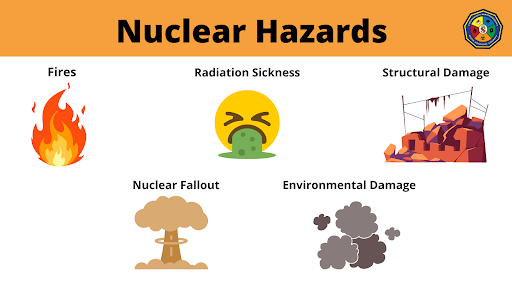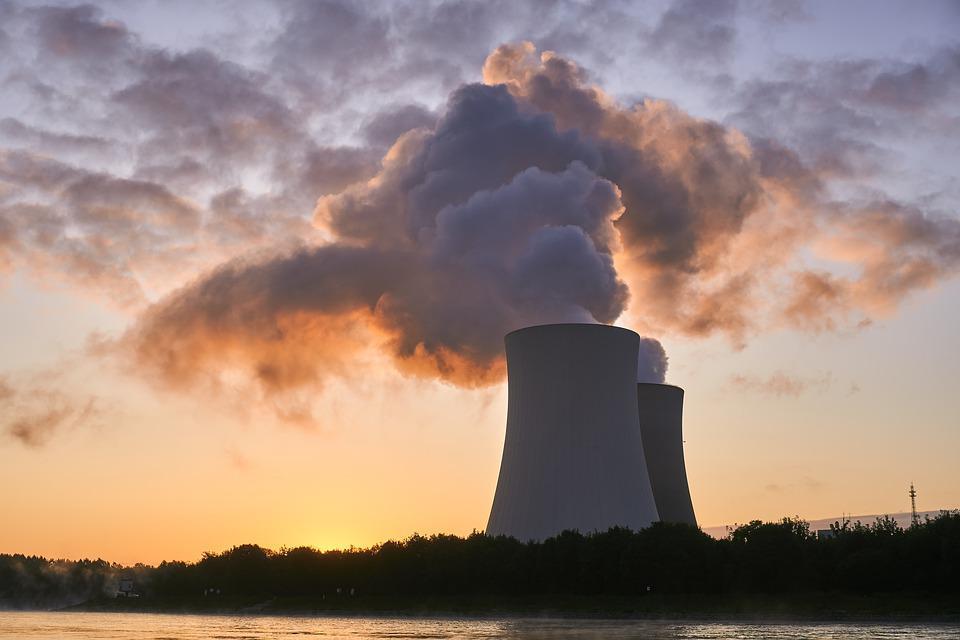Nuclear incidents can be intentional attacks or accidents that occur during transport or at nuclear facilities. Both can occur with very little or no warning at all and can have deadly effects, so it is important to be prepared.

Intentional attacks are carried out by detonating weapons that use a nuclear reaction to create an explosion. The weapons can range from small portable devices to large weapons carried by missiles. Aside from the death, injury, and damage caused at the blast site, nuclear fallout is also a concern. Nuclear fallout is radioactive material from the nuclear device that mixes with the vaporized material in the mushroom cloud and cools, condenses, and then falls back to the ground. It can be carried long distances by the wind and end up miles from the site of the explosion. Fallout is radioactive and can cause contamination of anything it lands on, including food and water supplies. Fallout is most dangerous in the first few hours after the detonation when it is giving off the highest levels of radiation. It takes roughly 15 minutes or longer for the fallout to return to ground level, outside of the immediate blast zone. That is enough time to prevent significant radiation exposure.

What you can do:
- Remember Time, Distance, Shielding!
- Time - Radiation exposure can accumulate over time so it is important to reduce the amount of time you are exposed.
- Distance - Exposure can be reduced by getting further away from the source of radiation.
- Shielding - Prevent direct exposure by using a barrier such as brick or concrete.
- Get inside the nearest brick or concrete building to avoid radiation. Go into the basement or center of the building away from the outer walls and roof for optimal protection.
- Remove any contaminated clothing and wipe off or wash unprotected skin if you were outside during or after the fallout. Avoid touching your eyes, nose, and mouth, if possible.
- Keep your distance from others in the building if possible to avoid further exposure to radioactive materials.
- Stay inside for 24 hours or until otherwise instructed by local officials. Keep your children and pets inside as well.
- Stay tuned for instructions by monitoring the news, emergency alerts, and social media for information from local officials about when it is safe to exit and where you should go.

Nuclear power plants convert water to steam, which powers generators to produce electricity. The construction and operation of these facilities are closely monitored and regulated by the Nuclear Regulatory Commission, but unexpected incidents can release dangerous levels of radiation affecting the health and safety of those nearby. There are two nuclear facilities within 50 miles of Anne Arundel County that our residents should be aware of including Calvert Cliffs Nuclear Power Plant and Peach Bottom Atomic Power Station.
If an incident occurs at one of these locations that endangers County residents, local officials will provide instructions for sheltering in place, evacuation, emergency sheltering, and additional safety precautions that the public should take based on the nature of the incident.
You can also prepare by following the four steps of emergency preparedness:
- Make a plan - Know that you understand some of the hazards of nuclear incidents, and you can plan for how you and your family will evacuate or shelter in place if told to do so by local officials. For more things to include in your plan visit ready.gov/plan.
- Build a kit - Nuclear incidents can affect the power grid, transportation, and other major infrastructure so you should include non-perishable food, plenty of water, first aid supplies, and other basic necessities in case you need to evacuate or shelter in place for an extended period of time. For more items to add to your kit, check out this video at https://youtu.be/FVwlcifEWm0.
- Stay informed - Knowing the hazards and how to respond to them is part of staying informed. You should also sign up to receive emergency alerts and follow us on social media for more preparedness tips!
- Get involved - Before disaster strikes, encourage your family and friends to be prepared. Help them with their emergency plans and kits. Point them to reliable resources like www.ready.gov and share our posts on social media.

